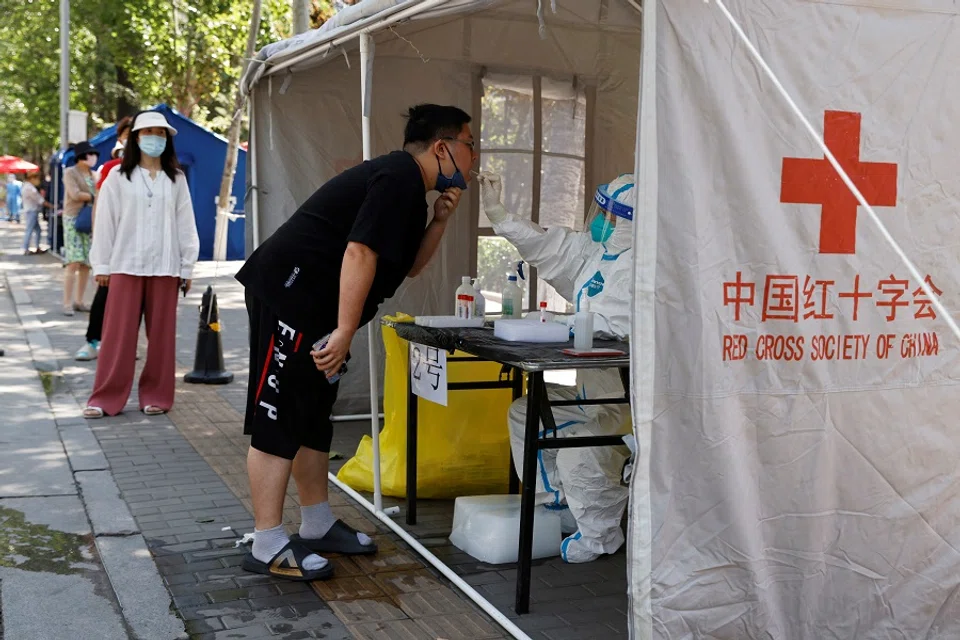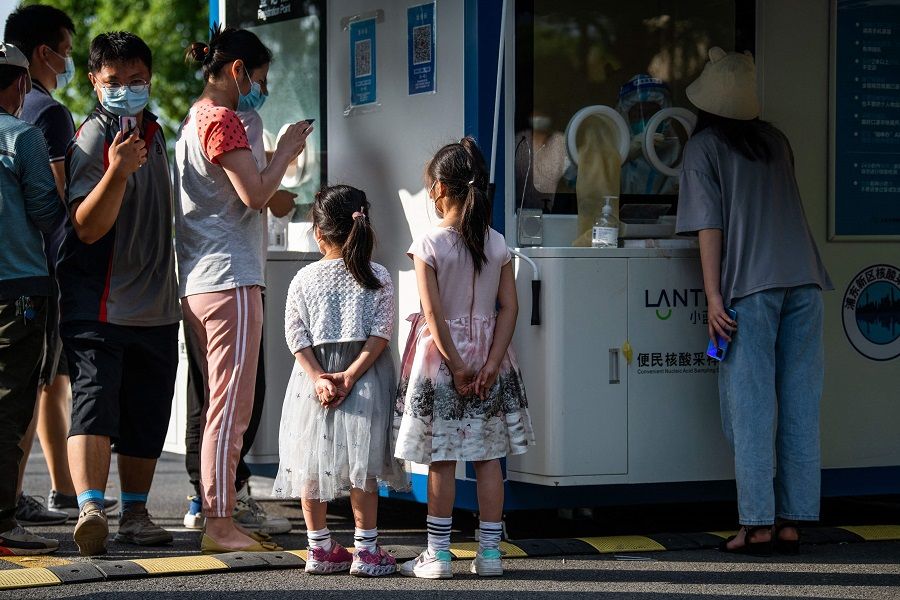PCR testing is big business in China. But who will bear the cost?

These days in Beijing, you can leave home without a passport, but you can't go anywhere without a negative PCR test result issued within 48 hours. Hence, it has become my routine to find a PCR testing station every other day, join the queue, scan my identification card and open my mouth for the swab test. It has become as habitual as brushing my teeth or washing my face.
Indeed, for China, the era of mass testing has come. And it has given rise to the massive emerging industry of PCR testing.
... normalising PCR tests in all first- and second-tier cities could cost up to 1.72 trillion RMB (US$257 billion) a year, or 1.5% of China's nominal GDP in 2021.
Flourishing testing industry
China News Weekly reported that since the outbreak of the Covid-19 pandemic, China has completed approximately 11.5 billion PCR tests. Soochow Securities Co Ltd estimated that normalising PCR tests in all first- and second-tier cities could cost up to 1.72 trillion RMB (US$257 billion) a year, or 1.5% of China's nominal GDP in 2021.
When there is a demand, there is a market, and this in turn leads to business opportunities. Over the past six months, various PCR testing institutions have sprung up one after another. The State Council joint Covid-19 prevention and control mechanism team stated on 17 April that the country currently has 13,100 qualified PCR testing institutions, employing nearly 150,000 people.

Some testing institutions that entered the market early became highly profitable amid the pandemic. For example, third-party testing institution Guangzhou Kingmed, which is among the first batch of PCR testing institutions, recorded a net profit of 2.2 billion RMB in 2021, an increase of 47% year-over-year. Its net profit rose 58% in the first quarter of 2022 alone, reaching 850 million RMB, which is nearly what it earned in six months last year.
PCR swabbing has also become a popular job. As PCR swabbers with a nursing or PCR testing qualification are in high demand, the testing institutions are offering a daily salary of 400 RMB to 600 RMB, three meals a day, the five social insurances and contribution to the mandatory housing fund (五险一金), and other generous incentives to attract more people.
... the rapidly expanding PCR testing industry could become a hotbed of corruption.
However, tempted by the lucrative business opportunity, various PCR testing institutions in regions including Hebei, Anhui and Shanghai have recently been exposed for falsifying PCR test results. At the height of the Covid-19 outbreak in late May and within a short span of ten days, three PCR testing institutions in Beijing were reported for fraudulent swab sample testing. This raises concerns that the rapidly expanding PCR testing industry could become a hotbed of corruption.

Clearly, not everyone is able to have a share of this seemingly lucrative pie. Chinese we-media account Shenlan Guan (深蓝观) recently said in an article that with the normalisation of PCR testing, numerous PCR testing institutions have not received timely payment and are now the "creditors" of local governments.
... it could take up to six to nine months before these enterprises receive their due payment.
The article, which has since been deleted on the Chinese internet, claimed that a third-party PCR testing institution involved in Shanghai's mass testing has yet to receive payment for its services after one to two months, while the head of a state-owned PCR testing institution in Beijing said that it could take up to six to nine months before these enterprises receive their due payment. Sometimes, they could even be owed "hundreds of millions of RMB". In other words, not everyone is cut out for the business of PCR testing.
Costs of normalised testing
The bigger debate over large-scale testing is about who should foot the bill.
Late last month, the pandemic control agency in Sichuan's Langzhong city released a notice for residents to conduct weekly normalised PCR testing at a self-paid cost of 3.50 RMB per test. The news drew strong online reactions, with many worried that self-paid testing would become the norm and evolve into a "tax" for leaving the home. Amid the controversy, the local government subsequently released a follow-up notice that the self-paid normalised testing would be voluntary instead.

If the public is not willing to pay for themselves, someone has to bear the costs, and there have been waves of debate over whether this should be taken on by the national healthcare or the national budget.
Last week, the National Healthcare Security Administration (中国国家医保局) made a clear statement that the costs of normalised PCR testing should be borne by local governments. But are local government budgets capable of taking on the costs of long-term, large-scale testing?
Weekly normalised PCR testing would cost around 120 million RMB a year - Langzhong's annual public revenue is only 1.5 billion RMB.
While free normalised PCR testing for all could quickly identify those infected and reduce the economic losses due to a lockdown if an epidemic spreads, there are growing calls to balance pandemic controls and budgetary expenses.
A calculation was made based on Langzhong: at a cost of 3.50 RMB per test, the total cost for one round of testing on its 620,000 residents would amount to 2.17 million RMB. Weekly normalised PCR testing would cost around 120 million RMB a year - Langzhong's annual public revenue is only 1.5 billion RMB.
Balancing economic growth and pandemic controls
With slowing economic growth and declining land sales revenue for local governments, coupled with measures to stabilise the economy amid the pandemic, such as tax and fee reductions, the tightening of local budgets is not news.
Normalised PCR testing is seen as an effective measure to stop the spread of the Omicron variant, and China hopes that this can help balance its needs to achieve both "dynamic zero" and economic growth...

Even in the absence of a pandemic, only a handful of economically developed provinces and cities such as Guangdong, Shanghai, Beijing, Jiangsu and Zhejiang are capable of handling the costs without the central government's help; nonetheless, normalised testing would still be a significant expense for these densely populated areas.
Normalised PCR testing is seen as an effective measure to stop the spread of the Omicron variant, and China hopes that this can help balance its needs to achieve both "dynamic zero" and economic growth, but the cost is significant.
Apart from the economic costs, normalised PCR testing also brings with it untold costs in terms of time and productivity, as well as the opportunity costs in terms of the labour and supplies invested to conduct the PCR tests. Considering these costs while trying to balance pandemic controls and economic growth will be another challenge.
